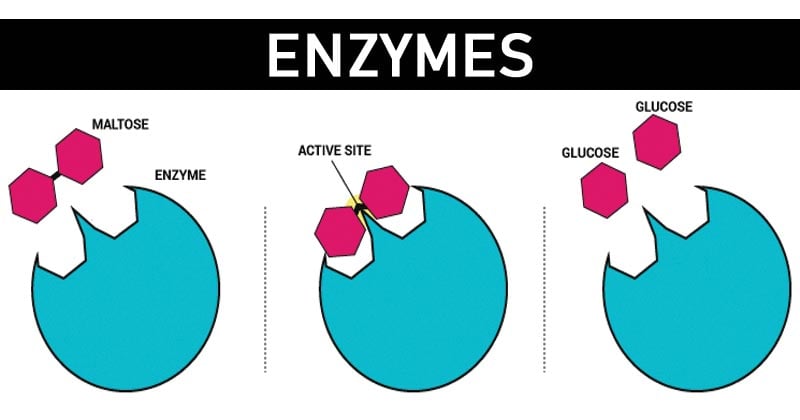Enzymes /ˈɛnzaɪmz/ are proteins that act as biological catalysts (biocatalysts). Catalysts accelerate chemical reactions. The molecules upon which enzymes may act are called substrates, and the enzyme converts the substrates into different molecules known as products. Almost all metabolic processes in the cell need enzyme catalysis in order to occur at rates fast enough to sustain life. Other biocatalysts are catalytic RNA molecules, called ribozymes. Enzymes' specificity comes from their unique three-dimensional structures.In 1877, German physiologist Wilhelm Kühne (1837–1900) first used the term enzyme.
Enzymes- Properties, Classification and Significance
- Enzymes are the biological macromolecules which speed up the rate of biochemical reactions without undergoing any change. They are also called as biological catalysts.
- An enzyme is a highly selective catalyst that greatly accelerates both the rate and specificity of metabolic reactions.

Properties of Enzymes
- Nearly all enzymes are proteins, although a few catalytically active RNA molecules have been identified.
- Enzyme catalyzed reactions usually take place under relatively mild conditions (temperatures well below 100oC, atmospheric pressure and neutral pH) as compared with the corresponding chemical reactions.
- Enzymes are catalysts that increase the rate of a chemical reaction without being changed themselves in the process.
- Enzymes are highly specific with respect to the substrates on which they act and the products that they form.
- Enzyme activity can be regulated, varying in response to the concentration of substrates or other molecules.
- They function under strict conditions of temperature and pH in the body.
Active site of Enzymes
- The active site of an enzyme is the region that binds the substrate and converts it into product.
- It is usually a relatively small part of the whole enzyme molecule and is a three-dimensional entity formed by amino acid residues that can lie far apart in the linear polypeptide chain.
The enzyme unit, or international unit for enzyme (symbol U, sometimes also IU) is a unit of enzyme's catalytic activity.[1]
1 U (μmol/min) is defined as the amount of the enzyme that catalyzes the conversion of one micromole of substrate per minute under the specified conditions of the assay method.
One katal is the enzyme activity that converts one mole of substrate per second under specified assay conditions.
The concept of enzyme unit should not be confused with the one of international unit (IU). Although it is true that 1 U = 1 IU[5] (because, for many enzymes, the existing U was adopted as the later IU)

No comments:
Post a Comment